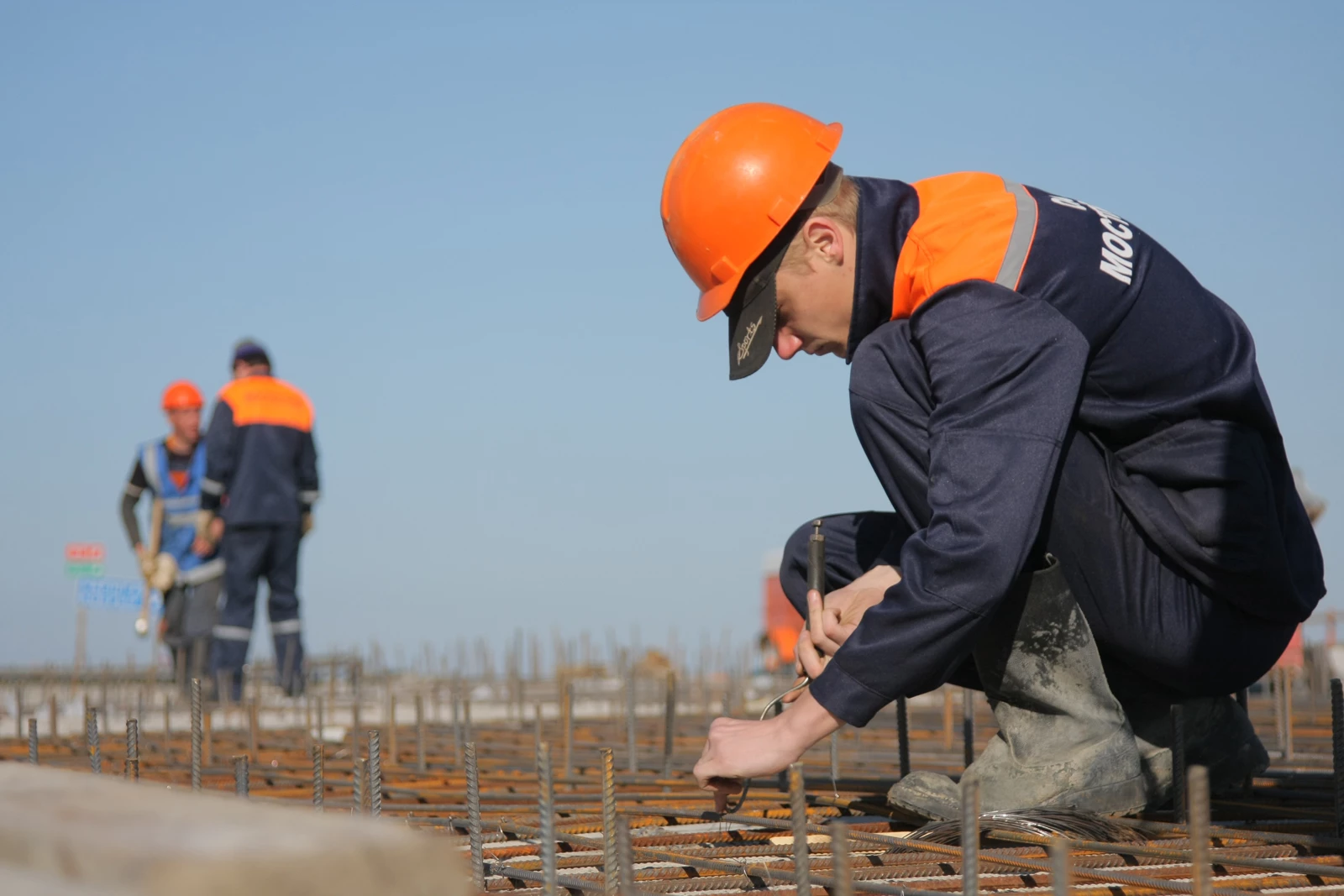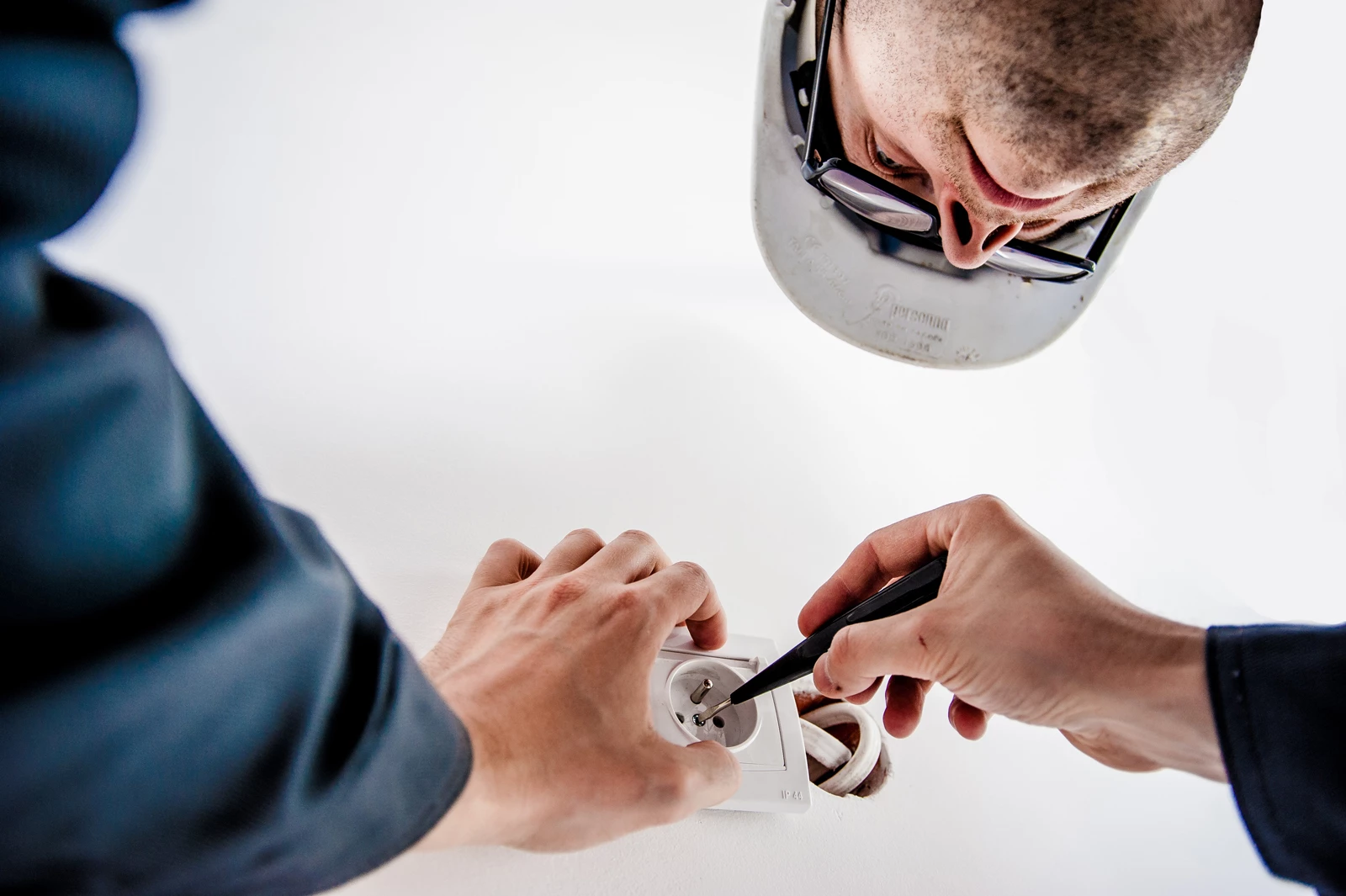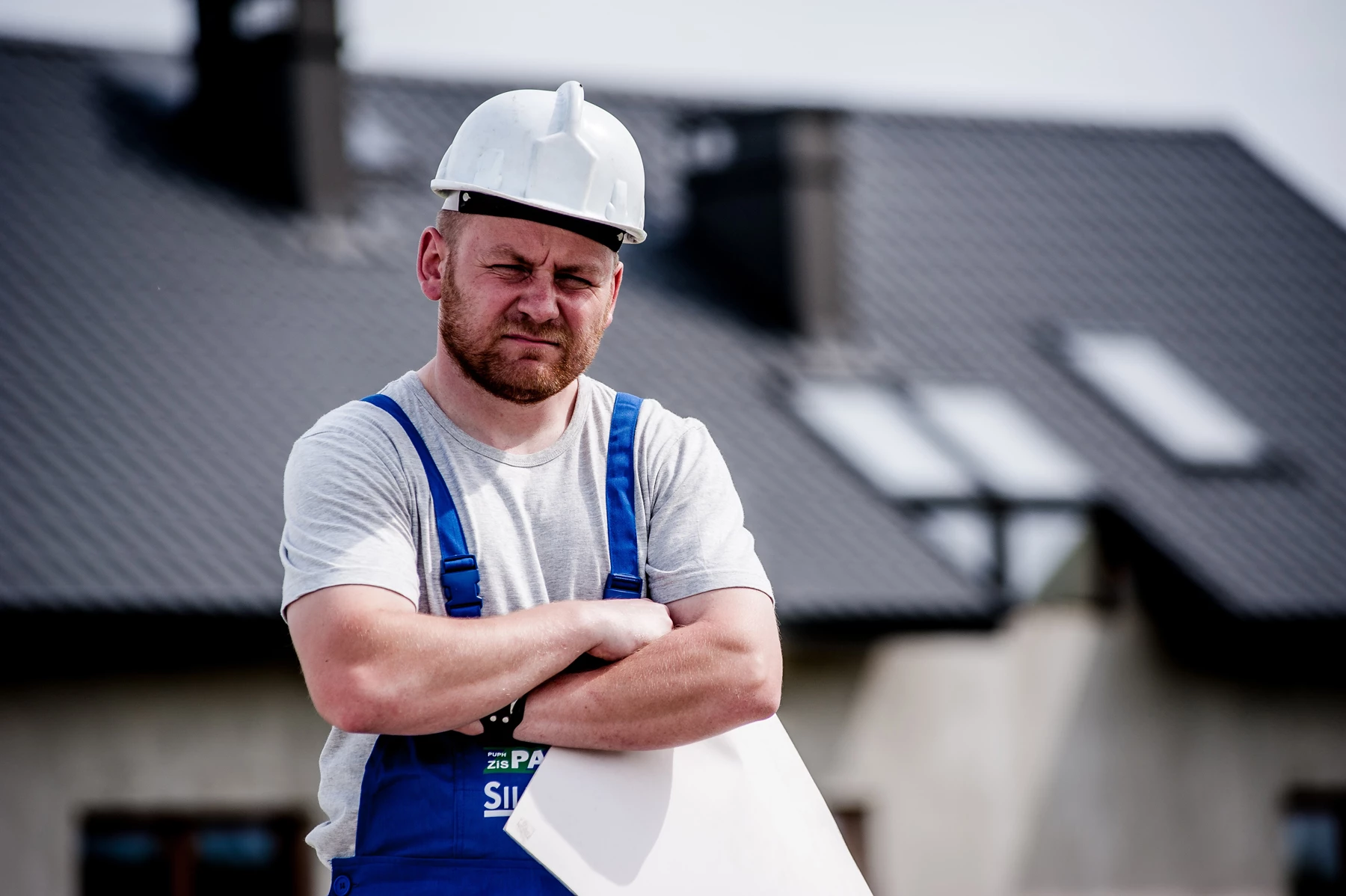18/01/2021 | Category: Commercial Insurance
Top construction site risks and how to avoid them
Building is a risky business. According to HSE figures, around 30 construction workers die each year in the UK as a result of work-related conditions or injuries, and a further 79,000 suffer ill health as a result of working in the industry.
What are the most common risks on a construction site, what can you do to avoid them, and how can commercial insurance help when things go wrong?
Constantly changing, always a risk
A construction site is a place of constant change. From one month to the next, or even from one hour to the next, tradesmen and contractors come and go, new substances and machinery are introduced, deliveries are made. The noise, dust, fumes and bustle can be disorientating, sometimes leading to accidents.
Construction also has a high rate of workers who are either self-employed or work for small companies. This can make risk management more challenging, as small operators may lack access to advice on occupational health, or they may find it hard to invest in equipment and measures to reduce risk.
Contractors are also not only responsible for their own safety on a construction site. Each worker can potentially endanger others, for example through poor handling of toxic substances, creation of slip and trip hazards and other oversights.
The risky nature of construction is just one reason why insurance for construction businesses is so important for firms in this industry. The fall out from an accident can be severe, ranging from loss of expertise to litigation and damage to reputation. Insurance is an important way to protect yourself and your company.
What are the most common construction risks?
Official data shows that the most fatal injuries in construction are caused by falls from a height (49% of fatal injuries occur in this way). This includes falls from scaffolding, roofs, or slipping from a ladder.
According to the Working at Height Regulations 2005, work at height should be avoided where possible and if not, then a site manager should ensure that work is well planned and organised, with appropriate risk assessments to ensure workers are as safe as possible.
The next most common causes of fatal injury are being trapped by something collapsing or overturning (14%), being struck by a moving vehicle (11%), being struck by a moving object, such as something flying or falling (10%), and contact with electricity or electrical discharge (5%).
Rates of ill health per 100,000 workers are higher in the construction sector than in the transportation and storage and manufacturing sectors, and a little higher than the cross-sector average. However, the agriculture, forestry and fishing sector carries more risk than construction.
In terms of non-fatal injuries, the biggest risk in the construction sector is also the biggest risk across all sectors – slips, trips or falls on the same level are responsible for 29% of all self-reported non-fatal injuries in construction, and 25% in all industries.
Other key causes of non-fatal injury in construction are injuries incurred while handling, lifting or carrying objects (20%), falls from a height (18%) or being struck by a moving (flying or falling) object (12%).
Falls from a height are a much more common cause of non-fatal injury in construction (18%) than in all industries (8%).Good management of construction sites can help to reduce these risks to a minimum, for example by removing slip and trip hazards and ensuring workers follow safety procedures when working at a height.
Occupational health risks in construction
Isolated incidents such as falling from a height or being struck by an object might be the most obvious causes of injury in construction, but the industry also has many serious risks that are slow to develop.
The construction industry has the most occupational cancer of any sector, with 40% of all occupational cancer deaths and cancer registrations. Each year there are approximately 5,000 cases of construction-related occupational cancer cases and 3,700 deaths. More than two thirds (70%) of these deaths are related to asbestos, alongside other toxic substances such as silica, paint fumes and diesel exhaust fumes.
Asbestos was once used for a huge range of applications within buildings, from insulation to ceiling tiles, wall plaster, and in electrical equipment. Construction workers need to be cautious in older buildings where asbestos may not have been identified.
Exposure to asbestos can cause fatal disease, and the fibres may even be carried home on workers’ clothing and pose a risk to family members. This is another reason why good commercial business insurance is so important.
Respiratory disease
The construction industry is a major contributor to the UK’s 12,000 annual lung disease-related deaths. Long-term exposure to damaging particles in dust and fumes during construction work can lead to conditions such as asthma, silicosis, chronic obstructive pulmonary disease and lung cancer.
Sources of contaminants include dust from brick, stone and rubble; toxic fibres in materials such as carpet and insulation; fumes from paints and varnishes; and wood dust.
Wearing personal protective equipment (PPE) can help to protect from this risk but it is not always worn, perhaps because it makes working less comfortable and the risk may seem less immediate than other threats.
Musculoskeletal problems
Construction work can take a toll on the body. The industry has one of the highest rates of back injuries and upper body limb disorders. This type of disorder accounts for around three fifths of all ill health in the construction sector.
Around 2.1% of all workers in the sector report that they suffer from a musculoskeletal condition that they believe to be work-related.
Manual handling training can help to reduce the risk of developing musculoskeletal issues. The risk is particularly high when performing lots of awkward movements such as bending, crouching, stooping, stretching, twisting and reaching.
Repetitive work and heavy loads increase risk. Workers are also more at risk if they use hand-held power tools for long periods or drive heavy vehicles over rough ground regularly.
Contact dermatitis
Some workers come into contact with hazardous substances that cause skin problems after long exposure. Trades that are particularly affected include painters and decorators, carpenters and joiners, floor fitters and tilers.
Dermatitis is a reaction that occurs when the skin has been in contact with an irritant. Common symptoms include redness, blistering, swelling, scaling or flaking, and cracking of the skin. The risk is higher with repeated and prolonged contact with substances.
Hand-arm vibration syndrome (HAVS)
Using hand-held power tools over long periods can cause permanent damage to the blood vessels, nerves and joints in the hands and arm. Hand-arm vibration syndrome (HAVS) can impact a worker’s ability to earn a living, as it can cause pain and the inability to do finer work.
To reduce the risk of HAVS, alternatives to hand-held power tools should be used wherever possible. Where hand-held tools are required, using the correct equipment in terms of power, weight, ergonomics, and maintenance can help to reduce risk, along with restricted exposure time.
Power tools and machinery can also combine to make construction sites loud places. With multiple contractors working at one time, it’s not always easy to predict noise volumes or identify the times when noise protection equipment will be required.
Stress, depression and anxiety
Like any sector, workers in construction can be adversely affected by work stress, leading to conditions such as depression and anxiety. The numbers experiencing these conditions are small, with around 0.7% of workers self-reporting stress, depression or anxiety.
The 0.7% rate of stress, depression and anxiety is significantly lower in the construction industry compared to the 1.4% rate seen across all industries. Each year there are around 16,000 work-related cases of these conditions, representing one quarter of the ill health in the construction sector.
While the proportion of workers suffering work-related mental health conditions may be low, low-skilled male workers in the construction industry have a suicide rate at 3.7 times the national average. It is unclear why this is the case, although low-skilled roles in construction can be insecure and poorly paid, leading to additional pressure on workers.
How to reduce risk in the construction industry
There are many measures that can be put in place to reduce the risk of injury on construction sites.
The key message is that the more thought you put into risk management, the more successful you are likely to be. It is also important to recognise that everyone has a responsibility for health and safety. A culture of risk awareness will help to reduce ill health in the workforce.
A risk management strategy is likely to involve regular site surveys to identify potential risks, so these can be resolved before they pose a threat to anyone.
Each day, a quick safety meeting before work starts can help to check that appropriate safety measures are in place and that workers understand what will happen that day and what risks there are on the site. All workers should understand the relevant safety processes and responses.
Insisting on workers using PPE is one of the most important things you can do to protect their health – and reduce the risk of your company facing a claim for personal injury further down the line. Safety equipment such as hard hats, eye protection, ear protection and high-vis clothing should be readily available and used whenever appropriate.
Exhaustion is also a major issue for construction workers. Scheduling regular breaks through the day and ensuring they are taken will help to prevent accidents happening because of fatigue or overwork. Equally, mental health should be discussed openly with workers to reduce stigma and encourage struggling workers to seek help.
The good news is that the incidence of work-related ill health in construction has been declining over time. In 2001/02 there were 4,450 cases of self-reported work-related ill health in the industry. By 2018/19, the figure has fallen to 3,170. Despite this improvement, there is still plenty of scope for increasing awareness in the sector.
Managing risk well is good for business
The construction industry is nothing without the people who get the work done. Being cautious and conscientious about risk is important to ensure you can attract and retain good people, besides being the right thing to do legally and morally.
Workers know when their employers have their best interests at heart, and when their bosses are exploiting them to make extra profit.
Losing a skilled, experienced worker is costly for a business in terms of lost knowledge, recruitment cost, productivity and insurance costs. In the building sector, having a reputation for cutting corners on safety could see your business struggle for quality workers.
In addition, any investigation into the health and safety measures in place in a company is carried out at the expense of those who are found to be in breach of the law, under the Health and Safety (Fees) Regulations 2012. Offenders are liable for the HSE’s costs of inspecting, investigating allegations and taking enforcement action.
HSE enforcement notices are listed on a public register, and where a prosecution takes place, the offender may also be listed on the Public Register of Convictions.
Why reliable commercial insurance is vital
When something goes wrong on a construction site, the consequences for the companies involved can be catasphrophic. In addition to the emotional impact of knowing someone has been injured on your watch, or perhaps even witnessing a distressing accident, the financial impact can be considerable.
If an event leads to protracted legal claims and associated negative publicity, an accident can even cause the collapse of an otherwise healthy business. This is why quality insurance is essential to sort out problems quickly and with minimum interruption to your activities.
Commercial insurance protects your business by providing cover on multiple fronts. From employers’ liability insurance, professional indemnity insurance, public liability cover and negligence cover, to business insurance cover and cover for buildings, contents and business interruption, this form of insurance steps in when your business is under threat.
Why not get in touch with Insurance Choice for a commercial insurance quote today?
Policy benefits, features and discounts offered may very between insurance schemes or cover selected and are subject to underwriting criteria. Information contained within this article is accurate at the time of publishing but may be subject to change.
